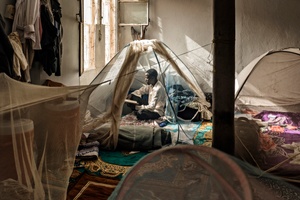Freud und Leid im Herbst in Kunst aus Japan
In the organizer's words:
The summer heat in Japan often lasts well into the fall during the day. But with cooler nights and the coloring of the leaves, the end of the year is already on the horizon. Thus, the colorful splendor of autumnal nature is mixed with a sense of the finiteness of all things, which lends their beauty a bitter-sweet note.
This presentation of artworks from the museum collection traces these contradictory aspects and ambivalent aesthetic sensations in art from Japan, with pictures of autumn flowers and grasses, chestnuts and the full moon illustrating the seasonal beauties of nature. The joys of excursions, picnics and moon gazing are echoed in the seasonal motifs in the lacquer decoration of a rice wine bowl, a plate and on boxes for food and utensils for making tea. Depictions of Nō Theater actors in popular roles on woodblock prints refer to cultural highlights of the season. The commemoration of deceased ancestors and visits to their graves, which in Japan usually take place in late summer, are echoed in images of Buddhist beings and acts of war, while in the gallery area, which is usually used to display large-format screen paintings, a concrete memento mori and at first glance beautiful landscape photographs by the artist Reijiro Wada, who was born in Hiroshima in 1977 and lives and works in Berlin, are reminiscent of historical tragedies. A view of the sea by Mie Prefecture artist Leiko Ikemura turns out at second glance to be a scene from a naval battle, and in the photographs by Muga Miyahara, born in Tokyo in 1971, bombs and fighter planes even appear in a tokonoma picture niche otherwise reserved for the contemplation of art.The paintings in the neo-traditional style of the Nihonga (literally: Japan pictures), which primarily depict national Japanese motifs, by highly famous painters in Japan such as Yokoyama Taikan or Kaburagi Kiyokata, may seem simply beautiful. They were first presented in Berlin in 1931 in an exhibition entitled "Contemporary Japanese Painting" and were subsequently donated. In the same year, the Japanese military provoked an incident in Manchuria, which marked the beginning of tensions on the mainland that ultimately led to the Pacific War as part of the Second World War. This simultaneity is a starting point for the exhibition shown in a neighboring gallery "Mio Okido. Remembered Images, Imagined History(ies) - Japan, East Asia and Me", which will be presented from September 14 to February 3, 2025. Joy and sorrow remain relevant beyond the fall.
"Joy and Sorrow in Autumn" is a temporary presentation of the Museum of Asian Art of the National Museums in Berlin in the Humboldt Forum, Room 318, "Art from Japan".
- Duration: September 11 to December 09, 2024
- free of charge
- Venue: Asia 3rd floor, room 318
- Languages: German /English
- Opening hours: Exhibitions: Wednesdays to Mondays from 10:30 - 18:30. Tuesday is a regular closing day.
This content has been machine translated.













